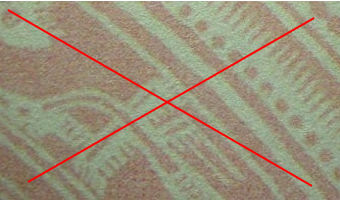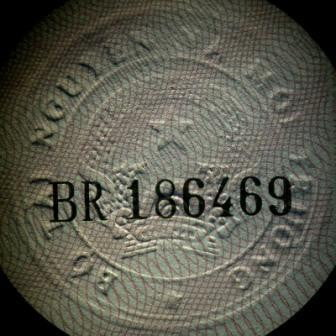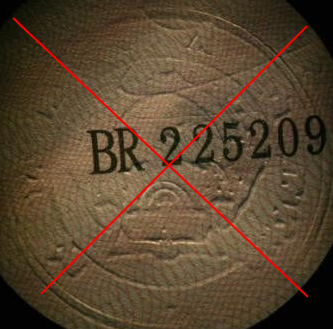How to Identify Real and Fake Real Estate Certificates to Avoid Scams
Buying a house or land is a significant investment, often the result of a lifetime of hard work. With the recent surge in real estate transactions, there has also been an increase in fraudulent activities involving fake real estate certificates. To avoid falling victim to scams and exploitation, it is crucial for individuals to be vigilant and verify the authenticity of documents before making any deposits or engaging in real estate transactions.
Detecting Instances of Fraudulent Activities Using Fake Real Estate Certificates
In recent times, authorities have been continuously prosecuting individuals involved in fraudulent activities, using fake real estate certificates to deceive and unlawfully acquire property. For example, on March 7, 2023, at the Bà Rịa Notary Office in Hòa Long, Bà Rịa City, during a routine process, the notary public discovered a suspicious power of attorney transaction regarding plot number 750, map sheet number 57, located in Hắc Dịch Ward in Phú Mỹ Town. The transaction involved a red certificate number DB 318226.
Upon inspection, it was observed that the red certificate, held by Ms. N.T.Q. (born in 1989, residing in Đồng Nai Province), had faint and blurry colors, indicating signs of forgery. The notary public was unable to verify the information on the certificate by cross-referencing Ms. Q’s identification card. Further investigation revealed that the certificate was jointly owned by eight individuals, contradicting the information provided by Ms. Q. Consequently, Ms. Q was suspected of forging the certificate, altering information from the identification card to her citizenship card (CCCD), and transferring the ownership of the property to her name. Law enforcement officials initiated an investigation and invited Ms. N.T.Q. for questioning.
The Bà Rịa – Vũng Tàu Provincial Police Department initiated legal proceedings against Tạ Thị Yến (born in 1956, residing in Hanoi) and Nguyễn Sử Thành (born in 1972, residing in Bà Rịa) for the crime of “Counterfeiting seals, documents of agencies and organizations, and using counterfeit seals or documents of agencies and organizations.” According to the investigation, since 2019, Yến had been purchasing land for housing in Kim Dinh Ward, Bà Rịa City. Noticing that the land was untended and uncertain of the owner, Yến sought assistance from Thành to forge red certificates in her and her daughter’s names for various plots of land. Thành contacted several individuals to create 26-28 fake certificates, covering an area of approximately 4.5 hectares. Yến paid more than 6 billion VND for these fraudulent certificates.
Yến entrusted 11 certificates to her daughter and provided one to a friend as collateral for a loan of 1.1 billion VND. The remaining certificates were submitted to local authorities to request land clearance. Due to suspicions surrounding these certificates, law enforcement agencies seized them for investigation. During questioning, Yến admitted to her criminal actions.
Similar cases occurred in October 2022 when the Phú Mỹ City Police received a report and investigated Đ.N.H. (born in 1992, from Đồng Nai Province) for forging and using agency seals and documents. Specifically, Đ.N.H. hired individuals through social media to forge red certificates and then attempted to transfer ownership at the Phú Mỹ Notary Office, where the fraud was discovered.
Another case in Đà Nẵng involved the Cam Lộ District Police initiating legal proceedings against Nguyễn Thị Thuận (33 years old, residing in Hải Châu District, Đà Nẵng City) for the crime of fraudulently misappropriating assets. Thuận operated a real estate brokerage office in Cam Lộ District, where she forged 17 red certificates and swindled 900 million VND from unsuspecting individuals.
Differentiating Real and Fake Real Estate Certificates
Currently, it is effortless to buy fake real estate certificates online, and the trend of producing counterfeit certificates is on the rise. Criminals employ various tactics, such as using genuine certificates but altering seller information, or creating entirely fake certificates.
To avoid falling prey to scammers, here are some ways to identify fake real estate certificates and ensure peace of mind during property transactions:
-
Carefully examine the essential information on the certificate: According to Decree No. 23/2014/ND-CP issued by the Ministry of Natural Resources and Environment, a genuine red certificate consists of four pages, with a pink lotus pattern background. It may also include additional white pages and must contain information such as the national emblem, the name of the land user, the owner of the property, and the certificate’s issuance number (serial number) consisting of two Vietnamese letters followed by six digits, printed in black. Additionally, a genuine certificate should bear the raised seal of the Ministry of Natural Resources and Environment. The certificate should also provide details of the land plot, the property associated with the land, and other relevant information.
-
Evaluate the color of the certificate: Fake red certificates are often digitally printed and have a lighter color tone compared to genuine certificates. The patterns on fake certificates may appear less vibrant and sharp.

Image: Fake real estate certificate with digitally printed colors and less sharp details.

Image: Genuine real estate certificate with uniform printing and clear details.
- Verify the national emblem: Fake certificates are often created by scanning genuine certificates and printing them separately on each side. Consequently, the national emblem of Vietnam on fake certificates may lack clarity compared to the distinctly raised emblem on genuine certificates.

Image: Fake national emblem printed on a certificate.
-
Ensure consistency between the seal and signatures: Real estate certificates should have consistent information between the seal and the signatures. In some instances, the title of the signatory may be changed from the Chairman of the People’s Committee to Chairman, creating inconsistencies. Therefore, if such discrepancies are observed, it is likely that the certificate is fake.
-
Check for any irregularities: Examine the certificate for any signs of tampering, such as erased numbers, land type, entry number, land usage, validity period, size, or map. If the certificate has additional pages, the overlapping marks and erased information should be investigated. In the case of multiple mortgages, the seals and signatures of the Department of Natural Resources and Environment or the Land Registration Office should be verified.
In light of the current prevalence of fake real estate certificates, individuals involved in property transactions are advised to bring their certificates to competent authorities, such as the Department of Natural Resources and Environment or the Land Registration Office, to verify the status of the property and the accuracy of the certificates before making any financial transactions. Alternatively, it is also advisable to have the certificates verified by reputable notary offices equipped with modern inspection equipment and experienced notary publics who can easily identify counterfeit documents.
Furthermore, during property transactions, individuals should be cautious when encountering unusual signs from potential partners, such as significantly lower selling prices or considerably higher buying prices compared to market rates; excessive urgency; excessive flexibility or easiness during negotiations; or vague information. In such cases, thorough scrutiny of the relevant documents is necessary.
By being aware of the methods used by scammers and following the suggested measures, individuals can protect themselves from falling victim to real estate fraud and ensure a secure and lawful property transaction. Visit Business Today for more insightful articles on finance and economics.
